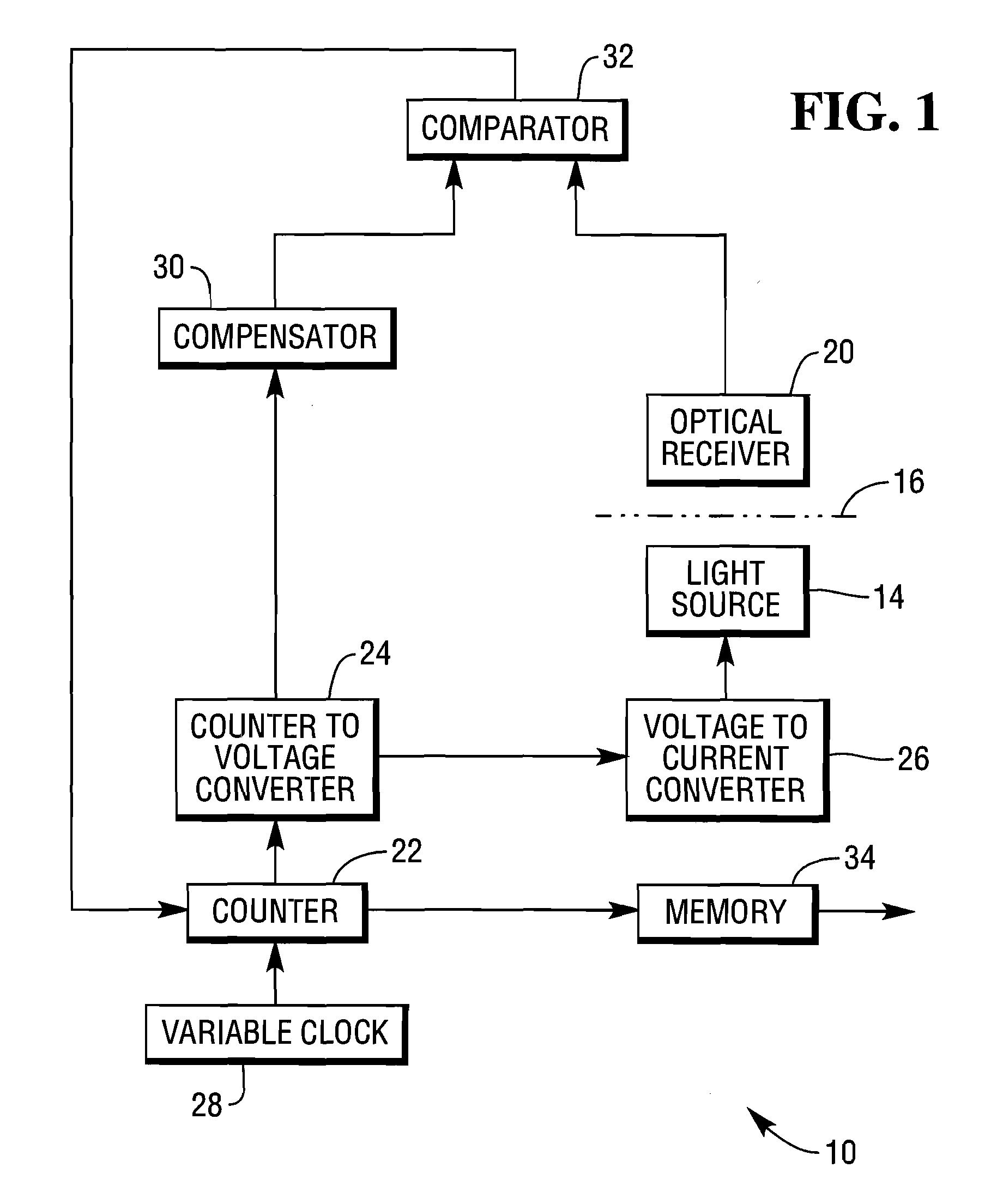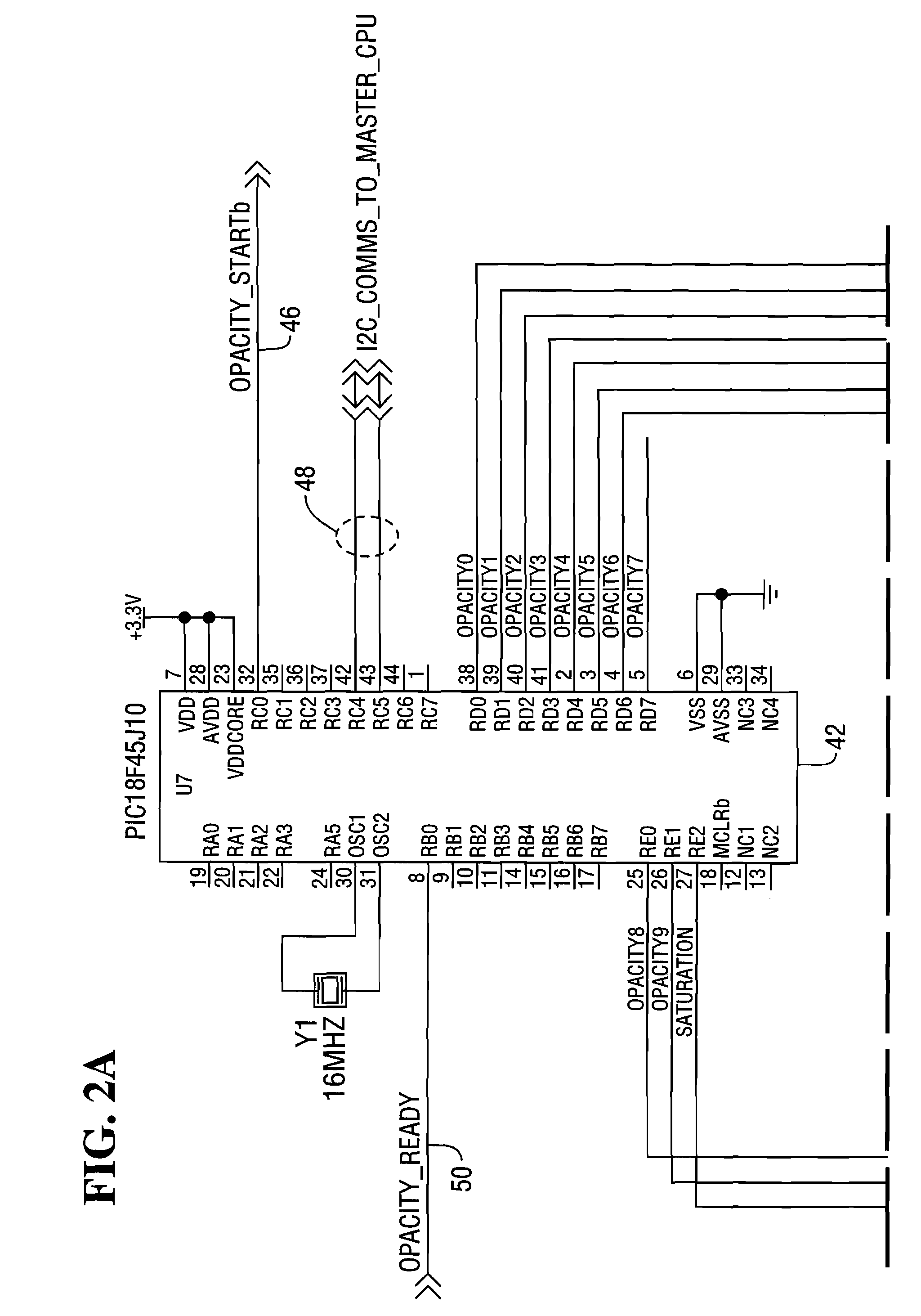Optical sensor
a technology of optical sensors and sensors, applied in the field of optical sensors, can solve the problems of high energy consumption of power-hungry light sources, high cost of heat sinks, and inaccurate measurement of drive currents, and achieve the effect of accurate measurement, accurate measurement of media items, and accurate measuremen
- Summary
- Abstract
- Description
- Claims
- Application Information
AI Technical Summary
Benefits of technology
Problems solved by technology
Method used
Image
Examples
Embodiment Construction
[0035]Reference is first made to FIG. 1, which is a block diagram of an optical sensor 10 according to one embodiment of the present invention.
[0036]The optical sensor 10 has a light source 14 in the form of a low cost infra-red (IR) light emitting diode (LED). The IR LED 14 is located on one side of a transport path (indicated by chain line 16). On an opposite side of the transport path 16 is an optical receiver 20 in the form of a photodiode. The photodiode 20 is aligned with the IR LED 14 to detect emission therefrom. A digital counter 22 is coupled to a counter to voltage converter 24, which is coupled to a voltage to current converter 26, which in turn drives the IR LED 14.
[0037]The digital counter 22 is regulated by a variable clock 28, having a low frequency (for example, 1 MHz) at relatively low counts of the counter 22 and a high frequency (for example, 32 MHz) at relatively high counts of the counter 22. The counter to voltage converter 24 is also coupled to a compensator ...
PUM
 Login to View More
Login to View More Abstract
Description
Claims
Application Information
 Login to View More
Login to View More - R&D
- Intellectual Property
- Life Sciences
- Materials
- Tech Scout
- Unparalleled Data Quality
- Higher Quality Content
- 60% Fewer Hallucinations
Browse by: Latest US Patents, China's latest patents, Technical Efficacy Thesaurus, Application Domain, Technology Topic, Popular Technical Reports.
© 2025 PatSnap. All rights reserved.Legal|Privacy policy|Modern Slavery Act Transparency Statement|Sitemap|About US| Contact US: help@patsnap.com



